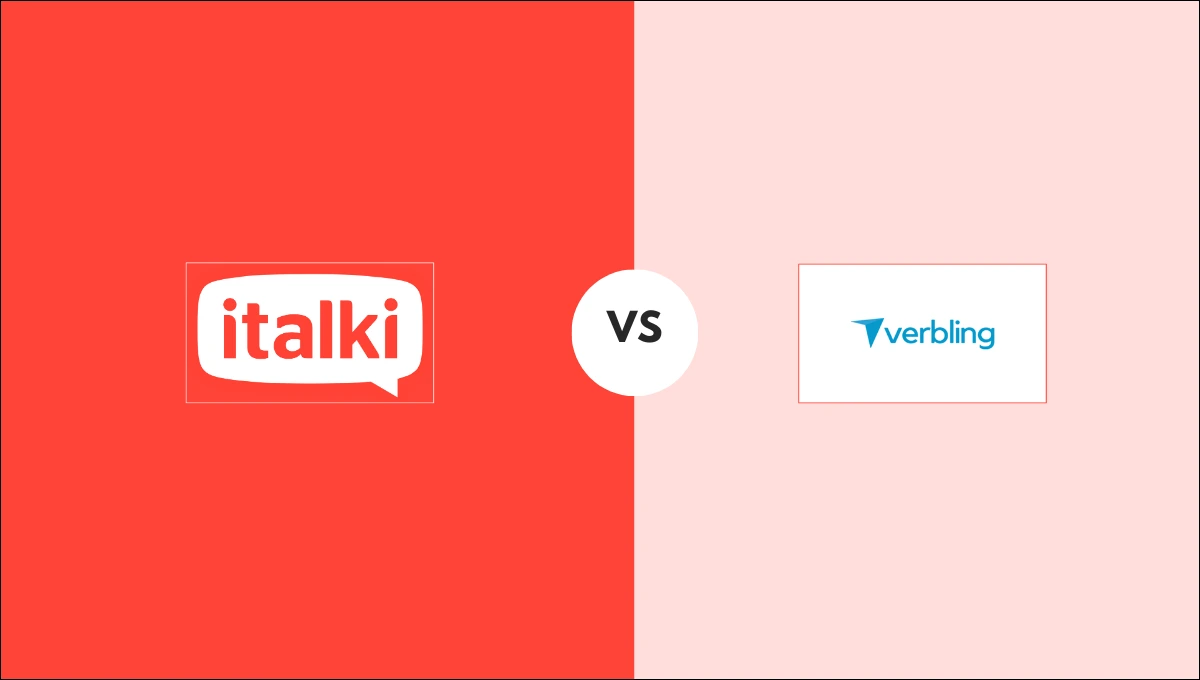Verbs are essential components of any language; you cannot communicate effectively without them. Spanish is no exception, and understanding the fundamentals of Spanish verb conjugation is critical to becoming an effective language speaker.
This article will teach you how to structure Spanish verbs, including standard rules, exceptions, and basic temporal conjugations.

Understanding Spanish verb conjugation
In Spanish, verbs change more than in English. They must fit the subject, tenses, and mode. These changes are referred to as conjugations. To conjugate a verb, we consider the subject pronoun and adjust the verb accordingly.
Subject pronouns
| I | Yo |
| You (singular) | Tú (informal), Usted (formal) |
| He, She, It | Él / Ella |
| We | Nosotros / Nosotras |
| You (plural) | Vosotros / Vosotras |
| They | Ellos / Ellas / Ustedes |
This is significant because we use different verb endings in Spanish depending on who acts. From here, conjugation is simple because most regular verbs stick to a set of rules.
In contrast, irregular verbs do not follow the same pattern as regular verbs. However, as you will see later in this article, there are some methods for making learning those verbs easier.
Regular verbs: -ar, -er and –ir
Regular verbs are the easiest to learn because they behave consistently. Fortunately for you, most verbs in Spanish are regular. The most basic form of a verb is the infinitivo (“infinitive”). In Spanish, verbs are divided into three groups based on their endings:
- hablar (to talk or speak)
- leer (to read)
- escribir (to write)
To begin conjugating a verb, simply remove the ending to isolate the stem. Then, add the appropriate termination.
Infinitive and stem for verb conjugations
| Infinitive | Stem |
| hablar | habl- |
| leer | le- |
| escribir | escrib- |

Regular verb endings: Present tense in the indicative
We can now begin to conjugate verbs. An excellent place to start is with the present tense in Spanish, which you will use for essential communication, such as introducing yourself. For now, we will only look at this tense to get a sense of how conjugation works. The method will be consistent for the majority of Spanish tenses.
First, we’ll look at how to form the present tense or present simple for each group of verbs.
Present tense endings
| -ar verbs | -er verbs | -ir verbs |
| -o | -o | -o |
| -as | -es | -es |
| -a | -e | -e |
| -amos | -emos | -imos |
| -áis | -éis | -ís |
| -an | -en | -en |
Now we can start by conjugating the examples we just mentioned above: hablar, leer and escribir.
Present tense conjugation
| Personal pronoun | -ar example | -er example | -ir example |
| Yo | hablo | leo | escribo |
| Tú | hablas | lees | escribes |
| Él / Ella / Usted | habla | lee | escribe |
| Nosotros | hablamos | leemos | escribimos |
| Vosotros | habláis | leéis | escribís |
| Ellos / Ellas / Ustedes | hablan | leen | escribís |
Mastering –ar, -er, and –ir verbs in Spanish is necessary if you want to understand the concept of Spanish verb conjugation. You may need some practice, but with time, you will develop the techniques to conjugate Spanish verbs quickly.

Irregular verbs
When verbs don’t follow a pattern for conjugation, they are called “irregulares” (irregular). Some of these verbs may appear regular -ar, -er, or -ir verbs, but their stems change when conjugated. Take the verb pensar (to think) and compare it to hablar. They both belong to the -ar group, but pensar is irregular because it alters a vowel in its stem:
Present tense – pensar
| Personal pronoun | Conjugated verb |
| Yo | pienso |
| Tú | piensas |
| Él / Ella / Usted | piensa |
| Nosotros | pensamos |
| Vosotros | pensáis |
| Ellos / Ellas / Ustedes | piensan |
Despite being irregular, some verbs, such as pensar, change the “e” in the stem to “ie” when conjugated in the present tense. Other verbs in this group include querer (want/love) and preferir (prefer).
- ¿Quieres ir al restaurante? (Do you want to go to the restaurant?)
- ¿Cuál prefieres? (Which one do you prefer?)
Another group of irregular verbs replaces the “o” in the stem with “ue” in the present tense: poder (to be able to), volver (to return), dormir (to sleep), and so on.
Present tense – poder
| Personal pronoun | Conjugated verb |
| Yo | puedo |
| Tú | puedes |
| Él / Ella / Usted | puede |
| Nosotros | podemos |
| Vosotros | podéis |
| Ellos / Ellas / Ustedes | pueden |
- Puedo venir a pie a la oficina. (I can walk to the office)
- Vuelvo a casa andando todos los días. (I go back home walking every day)
One thing to keep in mind is that verbs that change “e” to “ie” and “o” to “ue” do not change for all personal pronouns. Exceptions include the pronouns “nosotros / nosotras” and “vosotros / vosotras”.
Irregular verbs – present tense
| Personal pronoun | Simple present (Presente simple) – querer | Simple present (Presente simple) – volver |
| Yo | quiero | vuelvo |
| Tú | quieres | vuelves |
| Él / Ella / Usted | quiere | vuelve |
| Nosotros | queremos | volvemos |
| Vosotros | queréis | volvéis |
| Ellos / Ellas / Ustedes | quieren | vuelven |
There are still some irregular verbs that don’t fit into any of these categories. Other verbs, such as ser (to be) and ir (to go), undergo significant, sometimes complete, stem changes. Finding out the rules for learning these verbs is difficult, so you must memorize them. However, because they are typically common verbs for everyday use, you’ll be able to learn them quickly.
Present tense of ser and ir
| Personal pronoun | Simple present (presente simple) –ser | Simple present (presente simple) – ir |
| Yo | soy | voy |
| Tú | eres | vas |
| Él / Ella / Usted | es | va |
| Nosotros | somos | vamos |
| Vosotros | sois | vais |
| Ellos / Ellas / Ustedes | son | van |
Spanish verb conjugation may initially appear challenging. Still, you can pick it up quickly with practice and an understanding of the rules.
Remember the basics: remove the ending (-ar, -er, or -ir) from the infinitive to form the stem, then add the ending for the appropriate person and tense. Watch out for irregular verbs that change a vowel in their stem, such as pensar or poder. Remember to learn the conjugations for irregular verbs, such as ser or ir.
If you are still confused, you can seek guidance from a conversational Spanish tutor to develop your vocabulary, pronunciation, and tenses expertise. In this era of massive technological advancements, italki has introduced the best online learning resources. You can book lessons online with one of the italki’s tutors and start learning Spanish from home.
Learn the Spanish language with italki
This online language-learning platform is ideal for achieving fluency in Spanish. italki stands out for a variety of reasons.
Customized lesson plans: The customized plans make learning Spanish online much easier because they are tailored to meet learning objectives and requirements. italki provides personalized learning sessions to help you learn Spanish online. These sessions will help you create learning objectives and goals.
Experienced Spanish tutors: The majority of the italki tutors are native speakers. Depending on your preferred learning schedule and budget, you can choose the best Spanish tutoring services online from a pool of experienced and professional teachers. These teachers will develop personalized learning plans tailored to your specific requirements.
English speakers can also find Spanish tutors for English speakers who explain grammar, vocabulary, and pronunciation in a way that makes learning faster and less confusing.
Schedule flexibility: All students benefit from learning Spanish at their own pace and time. This fantastic platform understands people’s hectic schedules and strives for maximum flexibility.

Find Your Perfect Teacher
At italki, you can find your Spanish tutor from all qualified and experienced teachers. Now experience the excellent language learning journey!
Book a trial lesson
Interactive learning methods: When you book lessons with italki, you fully engage with your private Spanish tutor. The conversational learning style makes learning more interesting and enjoyable.
Spanish lessons near you, online: Whether you’re looking for Spanish lessons in New York, Spanish lessons in Seattle, or Spanish lessons in Miami, italki makes it easy to find a tutor that fits your schedule and location preference. All lessons are online, allowing you to learn from the comfort of your own home, no matter where you are.
Looking to find a tutor in a location near you?
Connect with a tutor from these popular timezones.
The enrollment process at italki
Go to italki. Fill out your profile with all of the relevant information. To find a Spanish teacher, click the ‘Find a teacher’ button and use the Spanish teacher filter. Select the teacher who best meets your learning objectives and requirements. Schedule your lessons.
You should follow your Spanish tutor’s additional materials, exercises, and scenario-based content. Accept constructive criticism and work on improving your weak areas.
Frequently asked questions
Why is verb conjugation necessary in Spanish?
The verb conjugation is crucial for expressing different tenses, moods, and aspects in Spanish. It helps convey accurate information about when an action occurs, the subject performing the action, and the sentence context.
How many verb tenses are there in Spanish?
Spanish has 14 verb tenses, including present, past, and future, each with variations and nuances.
What are the most common irregular verbs in Spanish?
Common irregular verbs in Spanish include ser, estar, ir, tener, and hacer. They deviate from regular conjugation patterns, requiring special attention.
How do I conjugate reflexive verbs in Spanish?
Reflexive verbs require a reflexive pronoun and are conjugated based on the subject. Place the reflexive pronoun before the conjugated verb or attach it to an infinitive or gerund.
Conclusion
Mastering Spanish verb conjugation may take time. However, following the correct technique can minimize confusion regarding Spanish verbs and their conjugations. Regular verbs follow the same rule. It is the irregular verbs that require special attention. Also, explore reflexive verbs in Spanish to build a deeper understanding.
Moreover, getting a highly experienced and professional Spanish tutor from italki can help you minimize all your confusion and develop the pace required to master the language.
Want to learn a language at italki?
Here are the best resources for you!



















